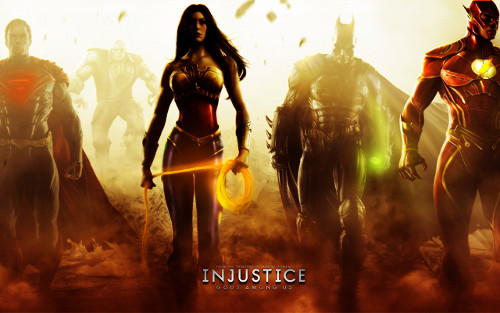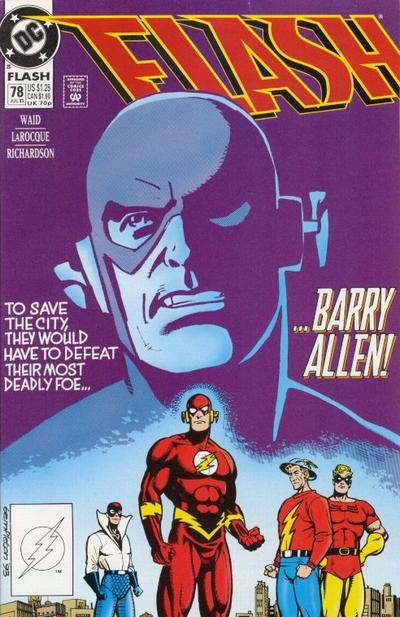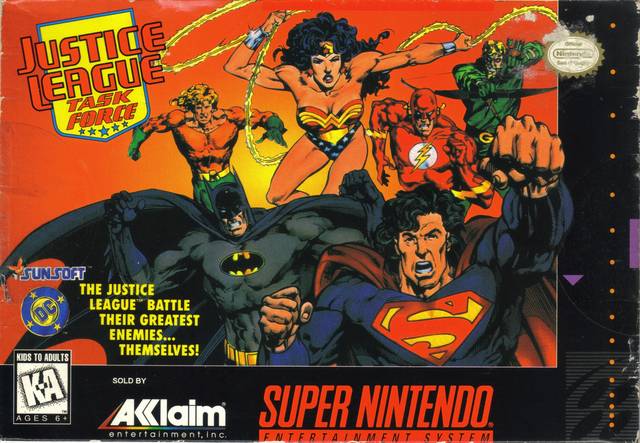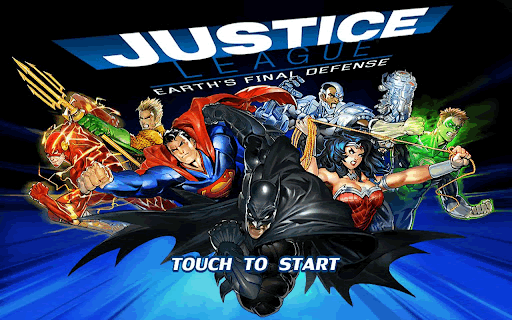Today’s guest post is by Brent Clayton
Generally speaking, Mike Wieringo is one of my favorite artists. Specifically, he is my all-time favorite Flash artist. And it took his death for me to reach that realization.
FLASHback 2007 – I read of Mike’s death in Comic Buyer’s Guide #1635. I am, of course, saddened by this news, his death happening at an age far too young. I knew of his work, appreciated his art, loved the passion and fun and crispness he infused in every panel but knew him best as the co-creator of young Bart Allen, he of swift Impulse. But as I read his obituary, I was overcome with a sense of bewilderment. It seems Mike had been living in Durham, NC.
Durham, a city that was a mere 23 miles away from my hometown. I was surprised, even shocked a bit, to learn that such a talent had lived so close to me yet I had no clue. Curious, I looked up other various articles online that reported on his death, wanted to know more of his life, eventually purchasing Modern Masters Vol. 9 featuring Mike by TwoMorrows Publishing (coincidentally, a company located in Raleigh, NC) What I learned of his life forever altered my view of both him and myself.
He and his family are from Virginia, with some family roots in Lynchburg, VA. As a younger man, I had followed my heart and my love, followed her all the way to Lynchburg, a beautiful city, a city surrounded by mountains, cradled within the clouds. To this day, Lynchburg remains a special place in my life; a place I know knew that Mike shared as well.
After graduation, Mike had the opportunity to attend Virginia Commonwealth University in Richmond, VA. Due to financial concerns though, he was unable to attend. Instead he eventually came to work within the grocery retail business, rising up, at one point, to become Produce Manager. Well, I know all too well the grocery retail business, having worked within it for the past 20 years. It’s a hard job, full of little aggravations that can easily grow to the size of a Lynchburg mountain. I was sure that Mike knew those same aggravations as well as the small joys the job can bring too. I could relate to him on that level.
But he didn’t want to become trapped within that life, he felt he needed to give one more shot to his dream so he re-focused on his art, re-applied to VCU and was able to attend. Having read that, my admiration of the man grew as I saw the passion he felt about the medium and the raw talent he had to pursue a career within it, the need to strive for that dream. As comic fans, I suppose we each have that dream at one point or another. My time was during my youth, I wanted to be a comic book writer. Being a child during the 80s, in a rural country town, when the Internet was science fiction, achieving such a goal was more difficult but that didn’t stop me. I submitted to Marvel and DC plenty of times, only to get a nice decline letter in return each time (although one editor suggested I start reading Comic Buyer’s Guide for more insight and help in the business so life is, indeed, a circle)
Over the years though, I started to realize that I may not have the proper drive to be a writer, perhaps not even the strongest of imaginations. I may be good at writing, but I am not a writer. I’ve spent years coming to terms with that tiny yet vast difference. But Mike didn’t, he went back to school, chased after that impossible dream despite the risks, and we all are the better for it.
I read of the many and varied titles Mike had worked on throughout his career, not only Flash, but Sensational Spider-Man, Robin, Adventures of Superman, Fantastic Four, Tellos and so many more. I resolved then and there to collect as much of his work that I could. The man may have passed, but his work will live on forever and I wanted to catch up on what I had been missing.
But then a dark thought occurred to me. I checked through my collection to find my copies of the guest books for HeroesCon, the largest comic convention held in NC each year in Charlotte. At that point in time, I found the copy for the last year I attended the con, 2005. With growing trepidation, I flipped through the pages and soon found it – ‘Mike Wieringo AA406’. He was there but for some reason I couldn’t remember or now even fathom, I didn’t stop by for a meet & greet. I checked my other copies and sure enough, Mike was in attendance yet not once did I ever stop by and say hello. I felt ashamed over these lost opportunities, too little too late.
To some, this may all sound like a far stretch or wishful thinking. Perhaps, but in learning of Mike’s life after his death, I think I’ve come to a better understanding of the man and the artist, I think we may have shared some things in common, things that would help demystify the comic persona and see him as the regular guy he was all along. I was both glad over this realization and saddened at the same time, that I can no longer tell him these things, that in some small way, I had taken him for granted.
My hope one day is, when I am able to again, to attend HeroesCon, when Todd Dezago (a near semi-regular) or Mark Waid are in attendance, to tell them how much I’ve enjoyed their work and if they would be so kind, tell me a story of their friend Ringo…
Brent Clayton posts here and on other Flash websites as Savitar




